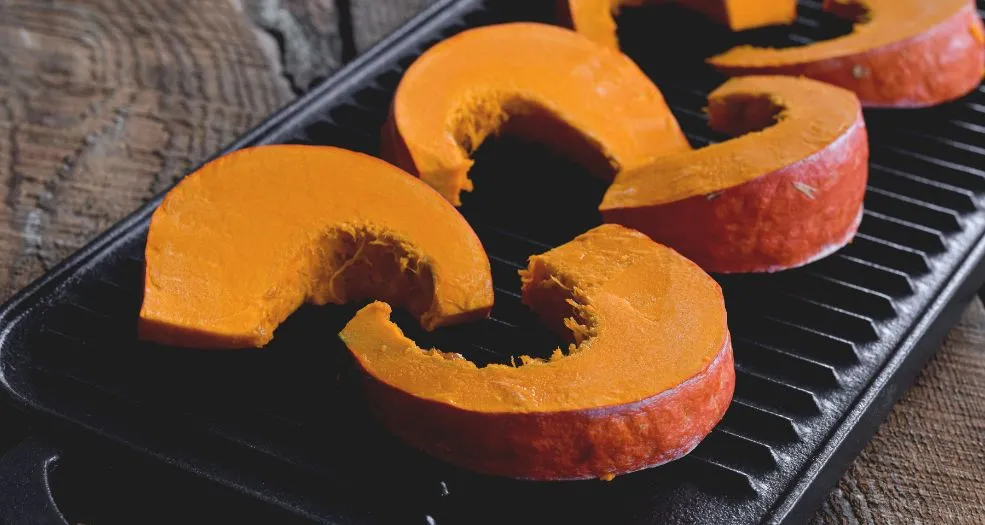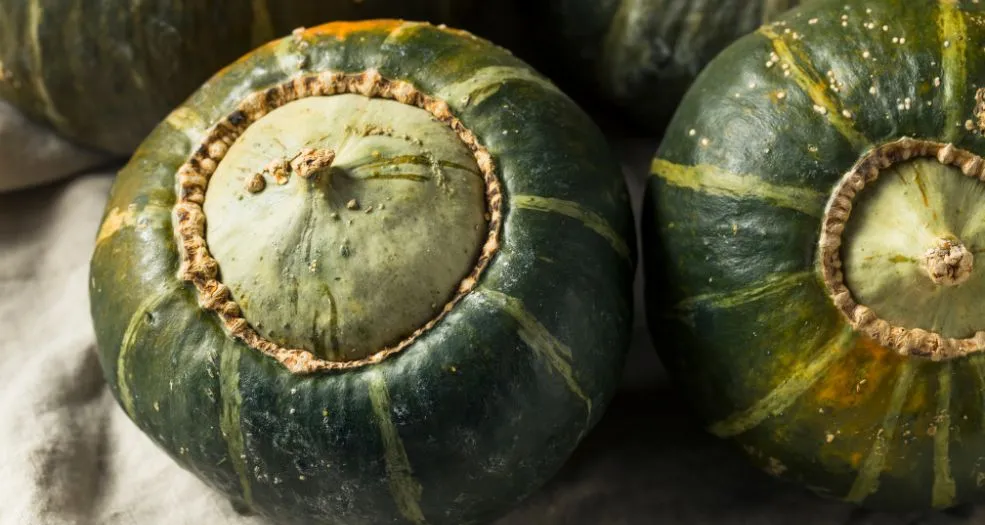In the cozy embrace of fall and winter, our kitchens become havens of warmth and comfort, filled with the aromas of hearty meals and seasonal vegetables. Among these, the buttercup squash stands out as a versatile and nutritious option, ready to be transformed into a myriad of delicious dishes. This article delves deep into the world of buttercup squash, from selecting the perfect specimen to unlocking its culinary potential through various cooking methods. We’ll explore its health benefits, compare it with its squash cousins, and even share some delectable recipes. Whether you’re a seasoned squash aficionado or new to this winter wonder.
Introduction
Ah, buttercup squash, the unsung hero of the winter vegetable trove! With its dark green skin and vibrant orange flesh, it beckons from the market shelves, promising sweetness and comfort in every bite. Often overshadowed by its more famous relatives like butternut or acorn squash, buttercup squash is a hidden gem awaiting discovery.
This squash variety is not just a feast for the eyes; its rich, sweet flavor makes it a favorite for those who have had the pleasure of tasting it. Unlike the more ubiquitous pumpkin, buttercup squash offers a subtler sweetness, making it a versatile ingredient for both savory dishes and sweet treats.
For those looking to add more nutritious options to their meals, buttercup squash shines brightly. Packed with vitamins A and C, beta-carotene, and fiber, it’s a powerhouse of health benefits. Plus, it’s as delightful to cook with as it is beneficial, fitting seamlessly into a range of recipes from soups and stews to pies and pastas.
As we peel back the layers of this remarkable squash, we’ll learn how to choose the perfect one, store it correctly, and prepare it in ways that will delight your taste buds and nourish your body. So, let’s dive into the world of buttercup squash and discover all the delicious possibilities it holds.
Choosing and Storing Buttercup Squash
When autumn leaves start to fall, and the air gets crisp, it’s a sure sign that buttercup squash season is upon us. But how do you pick the perfect one, and once you’ve got it, how do you keep it fresh? Let’s get into the nitty-gritty of selecting and storing this winter delight.
Identifying Buttercup Squash
First things first, let’s make sure we’re talking about the same squash. Buttercup squash is easy to spot with its dark green, hard shell, and a cute little turban-like cap on its bottom. It’s smaller and squatter than a pumpkin, and its flesh inside is a vibrant orange, promising sweetness and a plethora of dishes to brighten up any winter meal.
When to Pick Buttercup Squash
Timing is everything. The best buttercup squash are picked when they’re just right. Look for ones with a matte finish on their skin and a firm, turban-like cap. It should feel heavy for its size—a sign that it’s packed with moist, flavorful flesh. Avoid any with soft spots or cracks; these are signs that the squash is past its prime.
Storing Tips
Found the perfect buttercup squash? Great! Now, let’s keep it fresh. Store your squash in a cool, dry place, away from direct sunlight. A pantry or a basement shelf works wonders. Properly stored, buttercup squash can remain your culinary ally for up to three months. This longevity makes it a staple in kitchens looking for ingredients that last through the winter months.
With your squash now sitting pretty in your kitchen, ready for whenever inspiration strikes, you’ve got the building blocks for a host of delicious, nutritious meals. Whether you’re planning a cozy soup for a chilly evening or a stuffed squash centerpiece for a festive dinner, choosing and storing your squash correctly ensures that you’ll have the best flavor and texture at your fingertips.
Next up, we’ll dive into the prep work. Getting your squash ready for the spotlight requires some know-how, but fear not, we’ve got all the tips and tricks to make it as easy as pie—or, in this case, as easy as roasting a squash. Stay tuned!
Preparing Buttercup Squash
Before we can unlock the culinary delights of buttercup squash, a bit of prep work is in order. Fear not! With the right approach, preparing this winter squash is a breeze. Let’s walk through the steps to get your squash ready for the spotlight.
Cleaning and Cutting
First things first, give your squash a good rinse under cold water to remove any dirt from the field. Dry it thoroughly because we’re about to get slicing, and a slippery squash is a no-go.
Now, for cutting: Buttercup squash can be a bit tough, so you’ll need a sharp, sturdy knife. Place the squash on a stable cutting board. Carefully cut off the top and bottom to create flat surfaces. This makes it safer and easier to slice down the middle. Once halved, scoop out the seeds with a spoon. Save those seeds for roasting later—they make a delightful snack!
To Peel or Not to Peel
Here’s the scoop: With buttercup squash, peeling is optional. Its skin is edible and softens significantly when cooked, adding texture and nutrients. However, if you prefer a smoother texture, you can peel the halves with a vegetable peeler or knife before cooking.
With your squash cleaned, cut, and possibly peeled, you’re now set to embark on a culinary adventure. This prep work is the foundation for countless recipes that showcase the squash’s versatility. Whether you’re roasting it to caramelized perfection or incorporating it into soups and stews, buttercup squash brings a touch of sweetness and a whole lot of nutrition to your meals.
In the next section, we’ll dive into the heart of cooking with squash. From roasting to stuffing, you’ll learn how to transform this humble vegetable into dishes that warm the soul and delight the palate. Stay tuned for recipes that will make buttercup squash a cherished ingredient in your winter cooking repertoire.
Cooking Techniques
Now that we’ve prepped our buttercup squash, it’s time to turn up the heat and get cooking. This versatile vegetable lends itself to a variety of cooking methods, each unlocking a unique set of flavors and textures. Let’s explore some of the best ways to bring out the natural sweetness and creaminess of this squash.
Roasting Buttercup Squash

Roasting is a simple yet effective way to enhance the natural flavors of this squash. Here’s a quick recipe to get you started:
Ingredients:
- 1 buttercup squash, halved, seeded, and cut into ¾-inch slices
- 2 tablespoons olive oil
- ½ teaspoon kosher salt
- ¼ teaspoon black pepper
- Optional: Grated parmesan, fresh thyme, maple syrup
Directions:
- Preheat your oven to 400 degrees F (200 degrees C).
- In a large bowl, combine olive oil, salt, and pepper. Toss the squash slices in the mixture until evenly coated.
- Spread the slices onto a baking sheet and roast for about 25-30 minutes, or until golden brown and tender. For a sweeter take, brush slices with maple syrup in the last 10 minutes of roasting.
Roasting brings out a caramelized sweetness in the squash, making it a perfect side dish or a base for salads and grain bowls.
Stuffed Buttercup Squash Recipe
For a more substantial dish, stuffed buttercup squash is a crowd-pleaser. Here’s a favorite recipe:
Ingredients:
- 2 buttercup squash, halved and seeded
- 3 cups red apples, peeled and cut into small chunks
- ½ lemon, juiced
- ½ cup chopped pecans, divided
- 2 tablespoons brown sugar
- ½ teaspoon ground cinnamon
- 2 tablespoons butter
Directions:
- Preheat your oven to 350 degrees F (175 degrees C).
- Place the squash halves in a baking dish.
- In a large bowl, combine apples and lemon juice. Add most of the pecans (save some for topping), brown sugar, and cinnamon. Mix well.
- Spoon the mixture into the squash halves. Sprinkle with the remaining pecans and dot with butter.
- Bake for about 45 minutes, or until the squash is tender.
This dish is a wonderful combination of savory squash, sweet apples, and the crunch of pecans, perfect for a cozy dinner.
Alternative Cooking Methods
Winter squash is not only for roasting or stuffing. It’s also fantastic in soups, purees, or even cubed and added to curries and stews. The key is to experiment and find what works best for your taste buds.
With these techniques and recipes, you’re well-equipped to make the most of winter squash season. From the simple elegance of roasted slices to the comforting heartiness of stuffed squash, there’s no end to the delicious possibilities. Stay tuned for our next section, where we’ll dive into the health benefits and nutritional value of this winter favorite.
Health Benefits and Nutritional Value
Nutritional Profile of Buttercup Squash
Buttercup squash shines as a nutrient-dense vegetable, packed with essential vitamins and minerals. It’s particularly rich in vitamins A and C, offering significant amounts with each serving. These vitamins are crucial for various bodily functions, including immune system support, skin health, and eye health. The vibrant orange flesh of squash is due to beta-carotene, an antioxidant that the body converts into vitamin A, further amplifying its nutritional benefits.
Fiber Content and Weight Management
Another standout feature of buttercup squash is its high fiber content. Dietary fiber is key for maintaining digestive health, aiding in regular bowel movements, and promoting a feeling of fullness. This can be especially beneficial for weight management, as it helps prevent overeating by keeping you satisfied longer. Additionally, buttercup squash is low in calories, making it an excellent choice for anyone looking to maintain a healthy weight without compromising on taste or nutrition.
Essential Minerals and Health Benefits

Winter squash also provides essential minerals such as potassium and magnesium. Potassium is important for blood pressure regulation, while magnesium plays a vital role in muscle and nerve function, as well as bone health. Incorporating winter squash into your diet is an effective way to enjoy these health benefits while indulging in the squash’s natural sweetness and versatility in recipes.
By understanding the nutritional profile and health benefits of winter squash, we can appreciate not just its culinary value but also its contribution to a balanced and healthy diet. As we explore FAQs in the next section, we’ll delve deeper into how to select, store, and cook with winter squash, ensuring you get the most out of this nutritious and delicious winter vegetable!
FAQs
In this section, we address some frequently asked questions about buttercup squash. These FAQs aim to provide you with a deeper understanding and practical tips for incorporating this nutritious squash into your diet.
What is the difference between butternut and buttercup squash?
Butternut squash and buttercup squash are both winter squash varieties, but they have distinctive characteristics. Butternut squash has a long, bell-shaped appearance with smooth, tan skin, and a sweet, nutty flavor. Conversely, buttercup squash is more compact and round with dark green skin, often featuring a grayish “cap” on its bottom. It has a dense, orange flesh with a sweeter, creamier texture than butternut. Additionally, butternut squash tends to have a longer storage life compared to buttercup squash.
Does buttercup squash taste good?
Yes, buttercup squash is known for its delicious taste. It offers a sweet, slightly nutty flavor, similar to sweet potatoes. Its dense texture makes it ideal for baking, roasting, and pureeing. Consequently, buttercup squash is a popular choice for soups, pies, and as a side dish when roasted with herbs and spices.
Is buttercup squash the same as kabocha?
No, buttercup squash is not the same as kabocha, although they are often confused due to their similar appearance and taste. Kabocha squash, also known as Japanese pumpkin, has a dark green, knobbly skin, and is sweeter and drier than buttercup squash. Winter squash, on the other hand, usually has a turban shape and a different texture. However, they can sometimes be used interchangeably in recipes due to their similar flavor profiles.
Is buttercup squash edible?
Yes, it is entirely edible and highly nutritious, offering a rich source of vitamins A and C, fiber, and antioxidants. Its flesh is particularly valued for its sweet, creamy texture, making it a versatile ingredient in a variety of dishes, from baked goods to savory meals.
Can you eat buttercup squash raw?
While buttercup squash can be eaten raw, it is usually cooked to soften its dense flesh and enhance its sweet, nutty flavor. Raw squash can be tough and difficult to digest for some people. Cooking this squash, whether by roasting, boiling, or steaming, makes it more palatable and easier to incorporate into meals.
What’s the healthiest squash?
Identifying the “healthiest” squash depends on the nutrients you’re seeking. However, acorn, butternut, and spaghetti squashes are among the healthiest due to their high fiber content, vitamins, and minerals. Butternut squash, in particular, is notable for its high vitamin A content, whereas spaghetti squash is lower in calories and carbs, making it a popular choice for those watching their intake.
Are buttercup squash healthy?
Buttercup squash is incredibly healthy, packed with essential nutrients such as vitamin A, vitamin C, potassium, and fiber. These nutrients contribute to eye health, immune system support, heart health, and digestive health. Thus, incorporating this squash into your diet can offer various health benefits.
What is buttercup squash similar to?
Buttercup squash is similar to other winter squashes like kabocha and acorn squash in terms of texture and flavor. It shares the sweet, nutty flavor characteristic of winter squash, but with a creamier texture that makes it stand out. Kabocha squash is the closest in taste and texture, making them often interchangeable in recipes.
Which squash is most tasty?
The taste of squash is subjective and varies based on personal preference. However, many people find butternut squash to be one of the tastiest varieties due to its sweet, nutty flavor and versatile texture that works well in both sweet and savory dishes. Kabocha squash is also highly prized for its sweet, rich flavor.
What tastes better butternut or buttercup squash?
The preference between butternut and buttercup squash is subjective. Butternut squash has a slightly nutty and sweet flavor, while buttercup squash is known for its richer sweetness and creamier texture. The choice between the two often depends on the texture and sweetness level desired in a dish.
What is the American name for kabocha squash?
In America, kabocha squash is often referred to simply as “kabocha,” but it is also known as Japanese pumpkin. It is prized for its sweet flavor and dense texture, making it a favorite ingredient in soups, pies, and roasted vegetable dishes.
Is buttercup squash a fruit or vegetable?
Botanically speaking, this squash is a fruit because it contains seeds and comes from the flowering part of plants. However, in culinary terms, it is treated as a vegetable due to its savory flavor and use in dishes. This classification is common for many types of squash and other seed-bearing plants.
Can I substitute butternut squash for buttercup?
Yes, butternut squash can often be substituted for buttercup squash in recipes. Both have a sweet, nutty flavor, although butternut may be slightly less sweet and creamy than buttercup. Adjustments in cooking time and seasoning may be necessary to match the desired taste and texture of the dish.
Are butternut and buttercup squash interchangeable?
Butternut and buttercup squash can be used interchangeably in many recipes, especially in dishes where the squash is pureed or used as a filling. The main difference lies in their texture and sweetness, with buttercup being slightly sweeter and creamier. It’s advisable to adjust the recipe based on these differences to achieve the best results.
Are squash and buttercup the same?
No, “squash” refers to a broad category of fruits (botanically speaking) that are used as vegetables in cooking. This category includes a wide variety of types, such as butternut, acorn, spaghetti, and yes, buttercup squash.
By answering these common queries, we hope to have demystified some aspects of choosing, preparing, and enjoying Winter squash. Its versatility and nutritional benefits make it a worthy addition to your culinary repertoire, perfect for enriching your meals with flavor and health.
Conclusion:
As we conclude our extensive exploration of the realm of buttercup squash, it becomes evident that this winter vegetable holds significance beyond its seasonal allure. With its diverse culinary potential and nutrient-rich composition, this squash presents numerous advantages extending beyond its delectable flavor. Whether delving into its health benefits or experimenting with it in culinary endeavors, buttercup squash emerges as a nutritious and tasty option for those seeking to enhance their dietary experiences during the autumn and winter months. Embrace the comforting sweetness and warmth that this squash contributes to your meals, allowing it to spark creativity in crafting a season abundant with wholesome and flavorful dishes.
